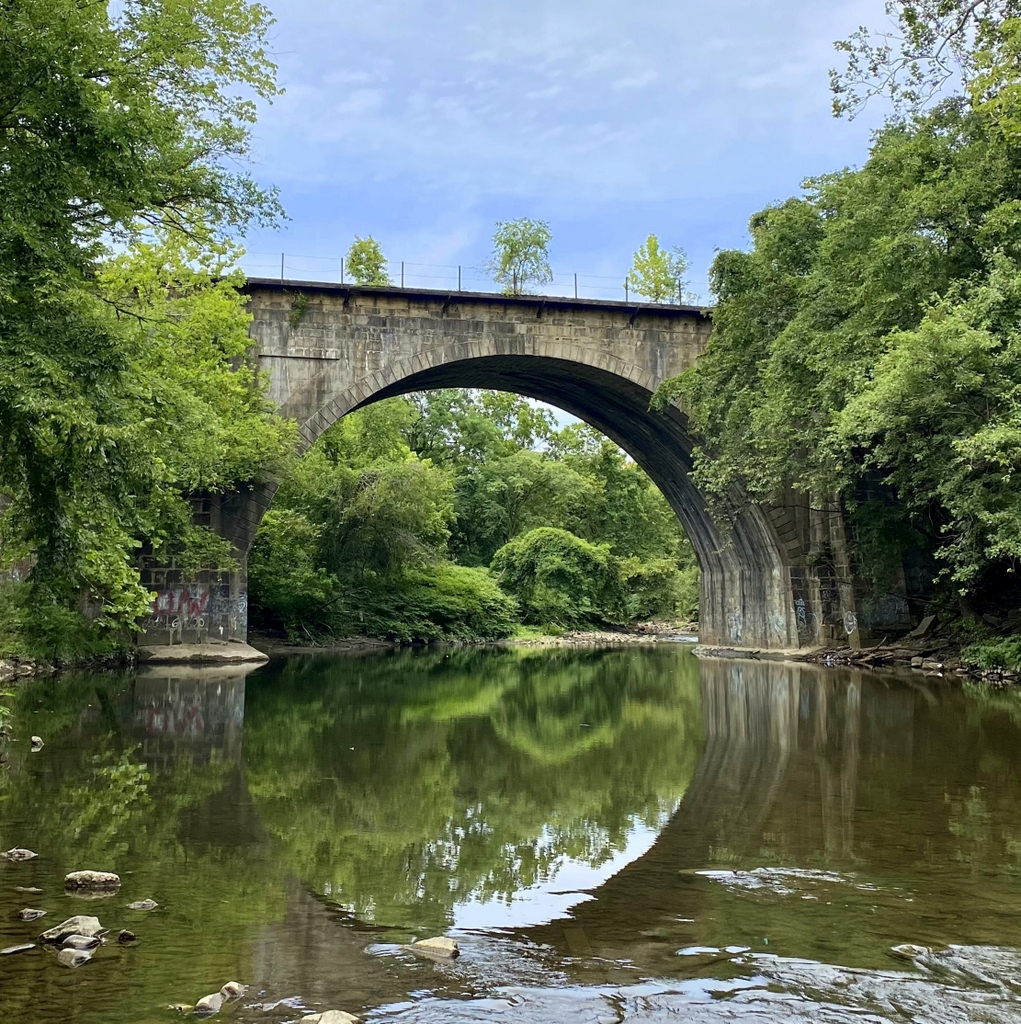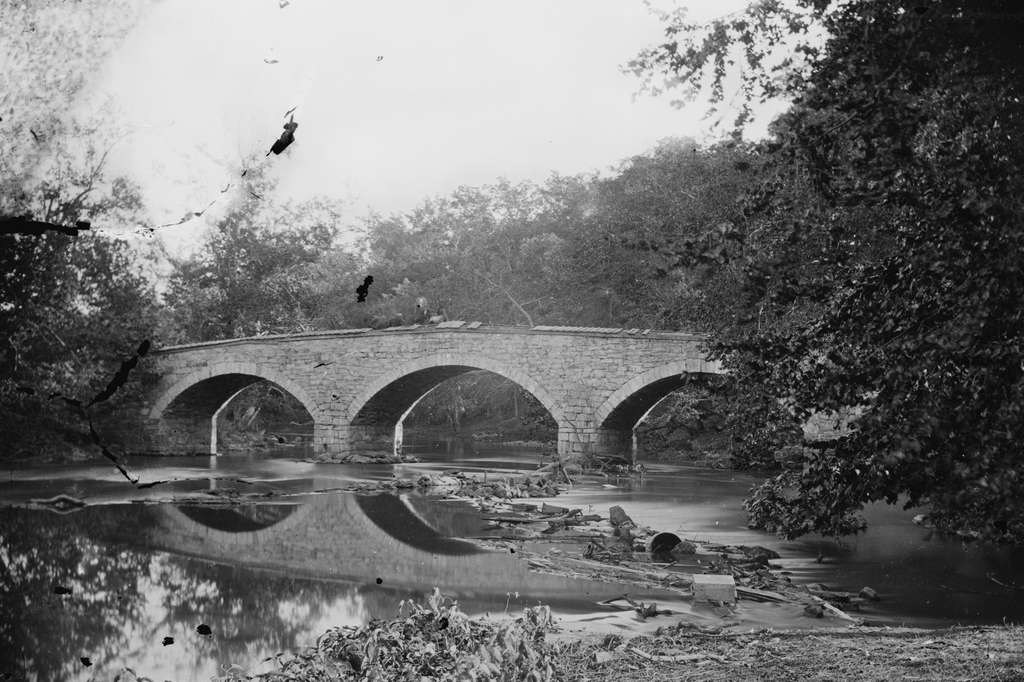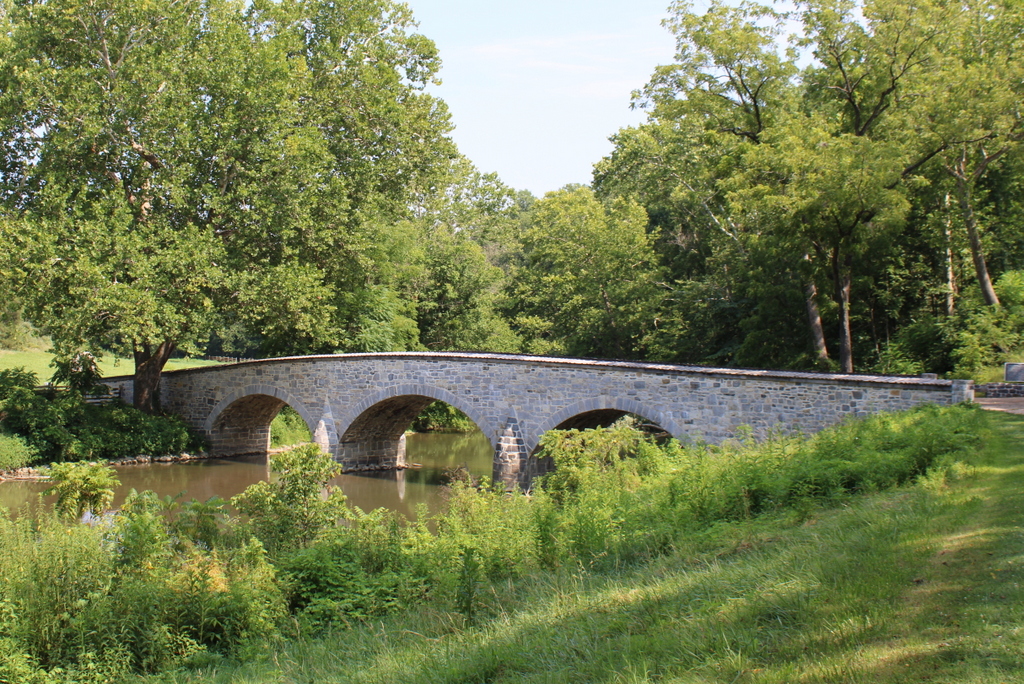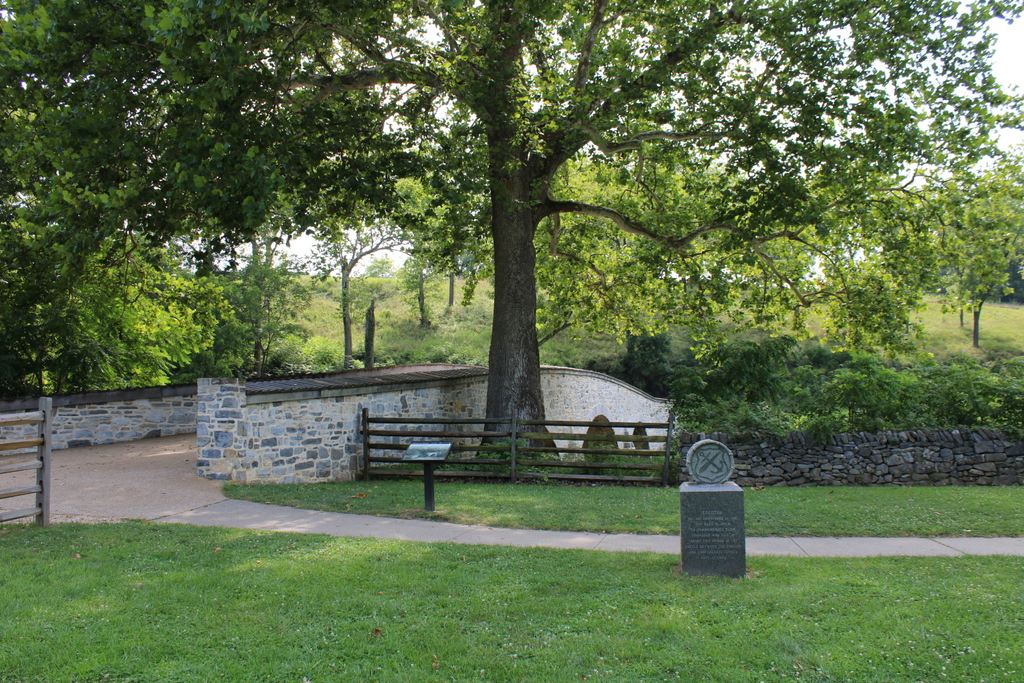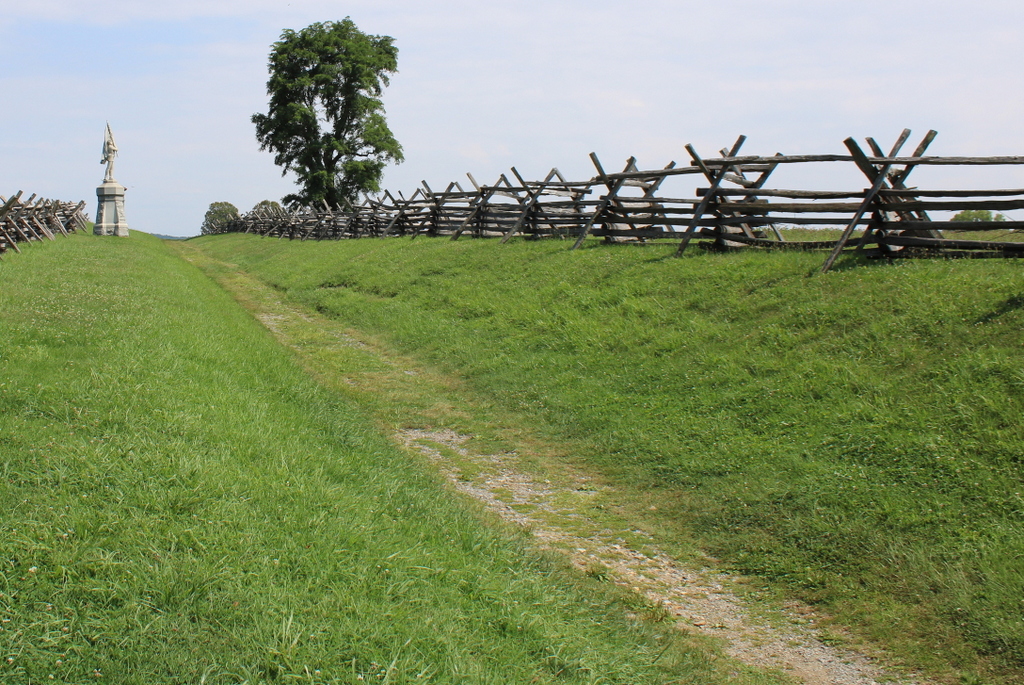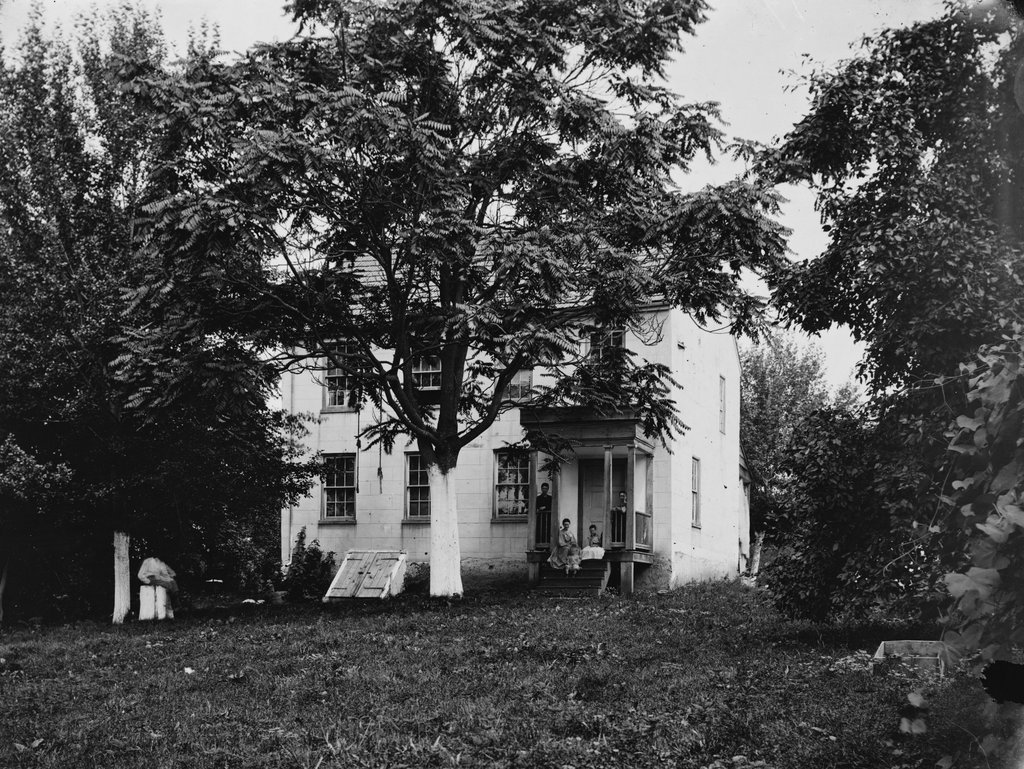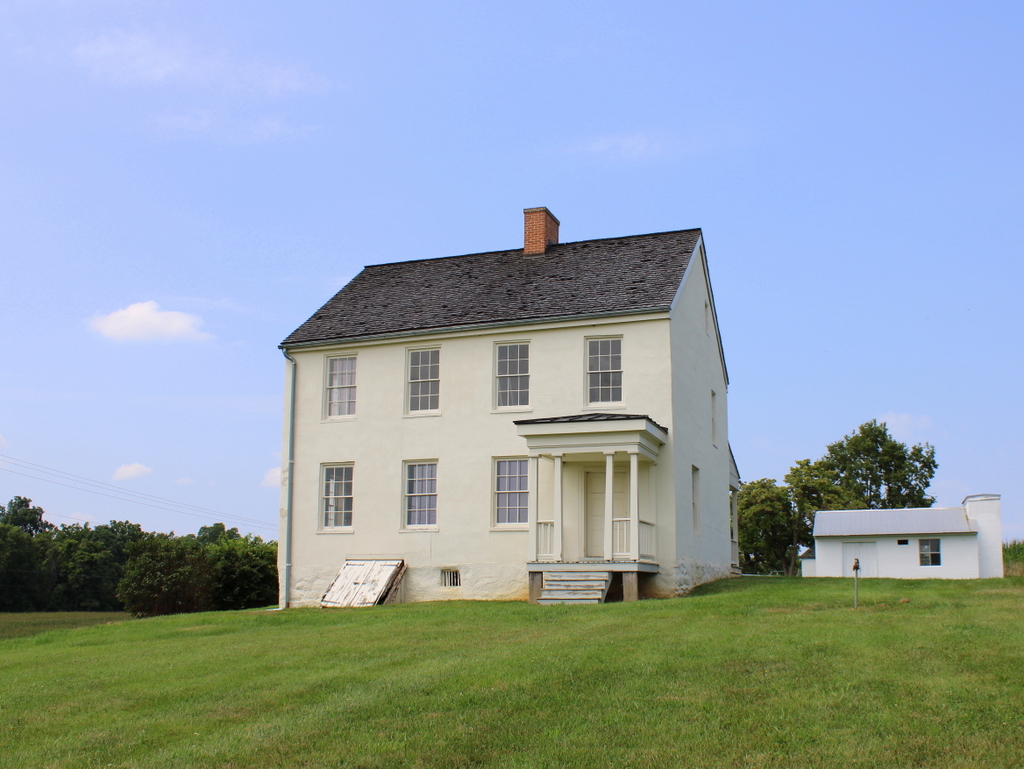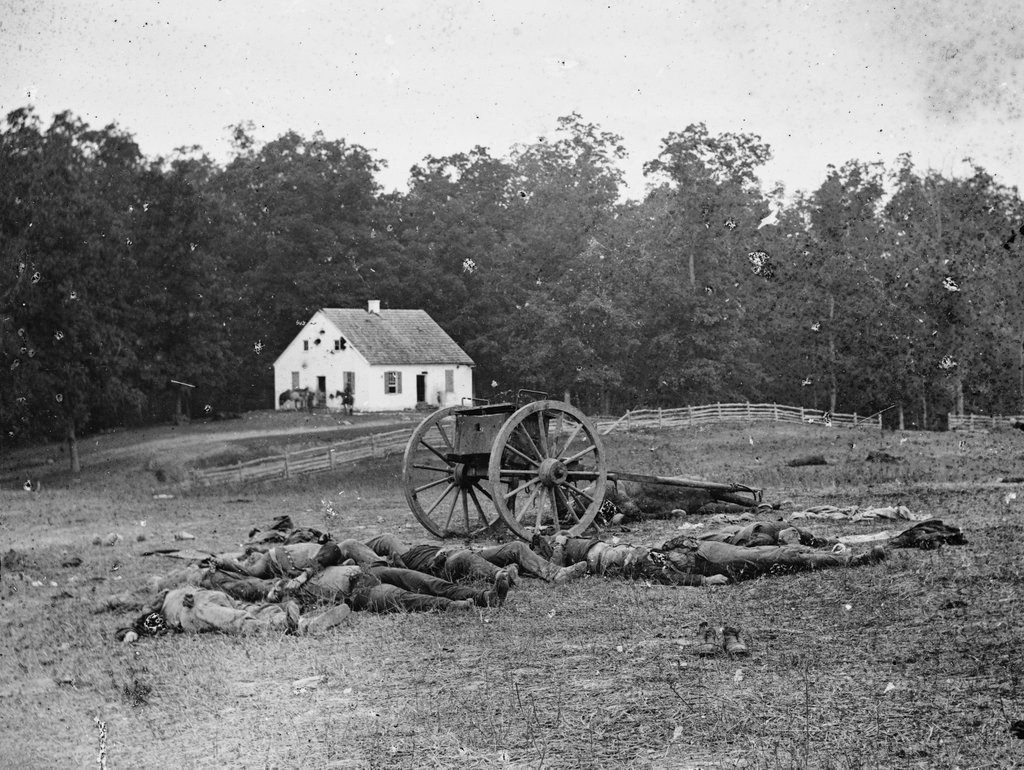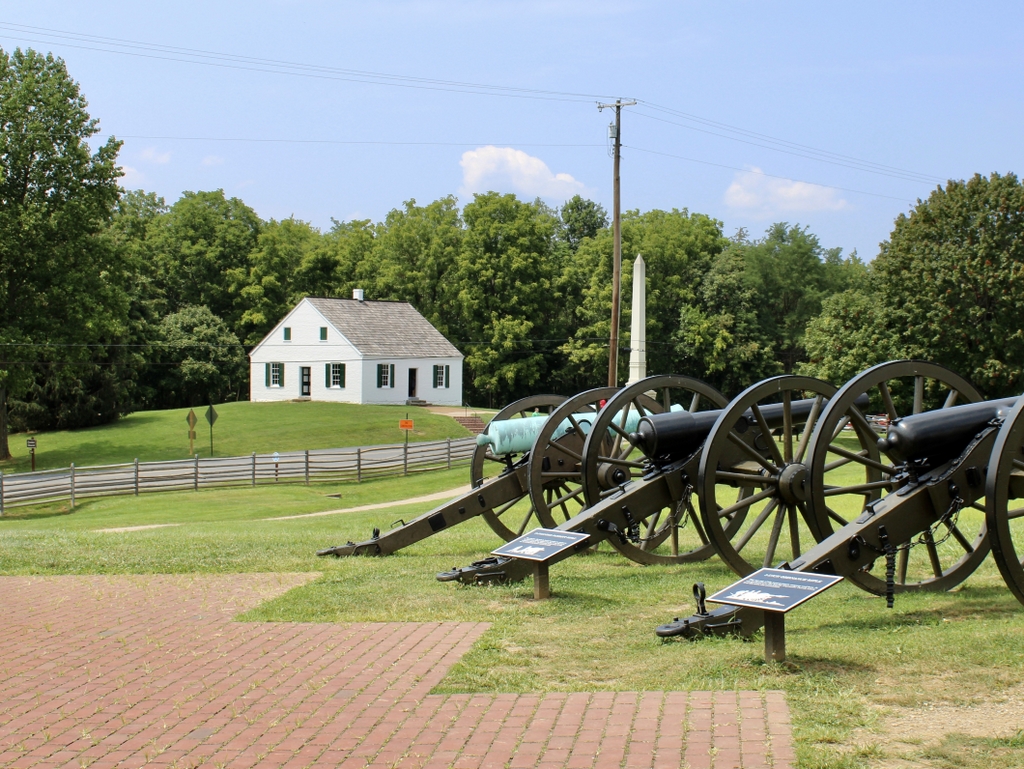The Carrollton Viaduct over Gwynns Falls in Baltimore, around 1921. Image from the October 1921 issue of the Baltimore and Ohio Employees Magazine.
The scene in 2021:
These two photos show the view of the Carrollton Viaduct from the east, where it passes over the Gwynns Falls stream. This bridge is a significant civil engineering landmark, as it was the first masonry arch railroad bridge in the United States, and today it remains in use as the country’s oldest active railroad bridge.
The bridge was constructed by the Baltimore and Ohio Railroad, which, depending on the criteria used, is often regarded as the first railroad in the United States. Prior to the 1830s, the primary means of inland transportation in the United States were turnpikes and canals. However, investors in Baltimore saw the potential of the newly-emerging railroad technology, and in 1827 they organized the Baltimore and Ohio Rail Road Company. This was not necessarily the first railroad in the country, as there were much smaller ones that predated it, but this was a far more ambitious plan, to construct a railroad westward from Baltimore, through the Appalachians, and to the Ohio River.
It would take many years before that goal would be completed, but in the meantime the railroad made significant progress here in the vicinity of Baltimore. Work on the railroad began on July 4, 1828, with a ceremony that featured Charles Carroll laying the cornerstone. Sources seem unclear as to whether that cornerstone was specifically for this bridge, or if it was at a different part of the railroad line, but either way it was a highly symbolic event. Carroll, aged 90, was the last living signer of the Declaration of Independence, so his presence provided an important link between the country’s founding principles and its new visions of industry and technological improvements.
Regardless of where the actual cornerstone ceremony occurred, this bridge would be one of the first of many engineering challenges that the new railroad would face as it worked its way westward from Baltimore. Here, the railroad had to cross over Gwynns Falls, a stream that was flanked on both sides by high embankments. Railroad superintendent Casper Wever was tasked with designing the bridge, and his initial plans called for a single 50-foot arch over the stream. However, because of concerns about flooding, this was changed to an 80-foot arch over the stream, along with a smaller 16-foot arch over a road that ran parallel to the stream on the left side of this scene.
In the end, the finished bridge was 312 feet long, and it rose 51 feet, 9 inches above the water. The work was completed in the fall of 1829, and it opened on December 21, 1829, in another ceremony that was attended by Charles Carroll. This time, he laid the final stone of the parapet, and the bridge was formally named the Carrollton Viaduct in his honor. The Baltimore Gazette And Daily Advertiser, reporting on the event the next day, provided the following account:
The Bridge over Gwynn’s Fall’s was yesterday completed by the laying of the last stone on the Eastern extremity of the South parapet. Carroll of Carrollton, our venerated fellow citizen, the last living signer of the Declaration of Independence, presided at the ceremony, and the Bridge, in pursuance of a resolution of the Board of Managers, was named after him—”The Carrollton Viaduct.” In the short & very appropriate address of Mr. Lloyd, the builder of the Bridge, to Mr. Carroll, he says that he does not ask for it a longer duration than the same of the last surviving signer; and we have no doubt that the Bridge will be found uninjured by time so long as the rocks upon which it is based shall stand. It speaks the character of the great work whose commencement it ornaments—firm as beautiful—useful as enduring.
As it turned out, Lloyd’s modest hope that his bridge would enjoy the same longevity as its namesake proved to be a considerable understatement. At the time, Carroll was 92 years old, and the first photo in this post was coincidentally taken about 92 years after the bridge was completed. By this point, the bridge was still going strong after nearly a century, even as rail traffic over the bridge had evolved from small horse-drawn trains of the 1820s, to the large steam locomotives and heavy freight cars of the 1920s.
Today, another century has gone by since the first photo was taken. The Baltimore and Ohio Railroad no longer exists, having been absorbed by other companies in a series of mergers. However, this line is still an active railroad operated by CSX Transportation, and the nearly 200-year-old stone bridge still carries modern rail traffic over Gwynns Falls. Because of its pioneering role in the early years of railroad development in the United States, the bridge was designated as a National Historic Landmark in 1971, and in 1982 it was similarly named a National Historic Civil Engineering Landmark.


